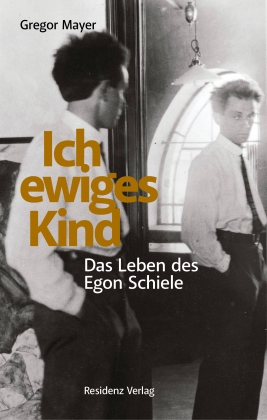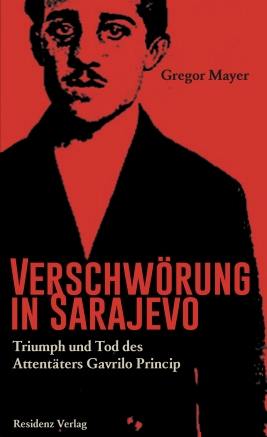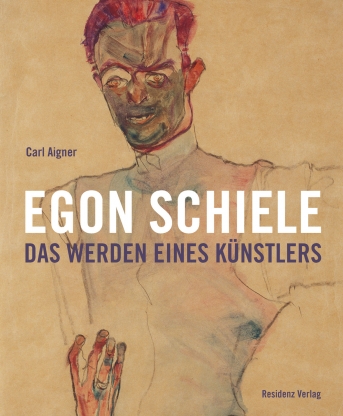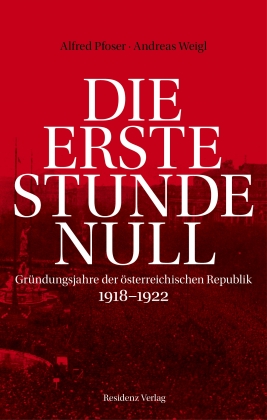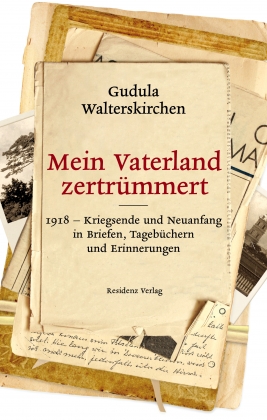Eine bunte Mischung voller Lesefreude. (…) Großartig geschrieben, hat man das Gefühl sich mitten im Leben des Künstlers zu befinden und alles aus seinen Augen zu sehen. Als Leser nimmt man Teil an einer wunderbaren Reise und genießt es nur Zuschauer zu sein.
[Quelle: Barbara Ghaffari, BOOKREVIEWS]
Ein heutiger Schiele könnte sich im Namen der Kunst also nicht mehr auf solch kompromisslose Weise auf die Spuren der nackten Wahrheit begeben. Dies aber ist das eigentliche Vermächtnis Egon Schieles. Noch in den sechziger Jahren wurden Werke von ihm zensuriert. Heute wissen wir damit offenbar besser umzugehen. Und dass das so bleibt, dazu leistet auch Gregor Mayers Nachzeichnung des zeithistorischen Kontexts von Schieles Künstlertum einen hilfreichen Beitrag.
[Quelle: Philipp Meier, NEUE ZÜRCHER ZEITUNG]
Gut für den Schiele-Einstieg.
[Quelle: Ralf Schlüter, ART]
Gregor Mayer hält diese Epoche auf faszinierende Art am Beispiel des Malers Egon Schiele fest.
[Quelle: Erika Achermann, ST. GALLER TAGBLATT]
Sein gut 200 Seiten umfassendes Buch zeichnet ein differenziertes, lebhaftes Bild von Schiele und seiner Zeit (…) es gelingt, ihm, Schiele in dessen kulturellem und gesellschaftlichem Umfeld zu verankern und seiner Zeit einen Aktualitätsbezug zu verleihen.
[Quelle: Nina Schedlmayer, PROFIL]
In diesem Buch erzählt Gregor Mayer nicht nur von Schieles spannenden Leben, sondern geht auch auf die neuesten Erkenntnisse der Schiele-Forschung ein, die der schwierigen Deutung der Schlüsselwerke Schieles neue Akzente geben.
[Quelle: Beate Riedl, NÖN]
Ausnahmekünstler in Nahaufnahme.
[Quelle: TIROLER TAGESZEITUNG]
Jenseits aller Mystifizierung führt Mayer im erzählerischen Stil in das Leben und das Künstlertum Schieles ein. Die Biografie eignet sich bestens als Einführung in Schieles Leben, Gedankenwelt und die Entwicklung seiner Kunst.
[Quelle: Udo Weber, EKZ]
Es ist eine der Qualitäten dieses Buches, dass der Autor in Exkursen einzelne Fakten näher ausleuchtet, wie zum Beispiel die Bedeutung des damaligen Wiens als Zentrum esoterischer Sinnsuche. (…) Auf eindrückliche Art legt der Autor die Belesenheit und das große Wissen Egon Schieles dar. So kommen im Gespräch mit dem Schiele-Forscher Johann Thomas Ambrózy erstaunliche Erkenntnisse ans Licht, die notabene einige bisherige Annahmen gehörig hinterfragen und teils korrigieren.
[Quelle: Biel-Benkemer, DORF-ZYTIG]
Überhaupt gelingt in dieser Biografie mit der Beschreibung des Lebensgefühls des Fin de Siècle und seinen Umbrüchen der Brückenschlag zur heutigen Zeit.
[Quelle: Doris Schrötter, BIBLIO]
Der Autor Gregor Mayer ist kein Kunsthistoriker und will auch gar nicht Schieles ganzes Leben erzählen. Er bildet stattdessen viele Debatten ab, die sich um ihn entzündet haben.
[Quelle: RAIFFEISENZEITUNG]
Zijn bijzondere schrijfstijl en de veelal poëtische benaderingen zorgen voor een fascinerende benadering van het leven en werk van deze rebel, pornograaf en kunstenaar (...).
[Quelle: OPTISCHE FENOMENEN]
Ein großes Plus dieser neuen Biografie über Egon Schiele ist die Einbindung in den sozialen und kulturellen Kontext seiner Zeit.
[Quelle: Doris Schrötter, BIBLIOTHEKSNACHRICHTEN]
Eine Fundgrube für kulturgeschichtlich interessierte Leser*innen.
[Quelle: Rüdiger Sareika, EVANGELISCHER BUCHBERATER]
Gregor Mayer recounts not just Schiele’s stormy relationship with lover Wally Neuzil and how Gustav Klimt and other pioneering artists of the era inspired him. The author also takes a closer look at the famed painter’s childhood in the Lower Austrian town of Tulln (…). Mayer has analysed numerous letters and publications to illustrate how Schiele became an outstandingly innovative and truly gamechanging artist.
[Quelle: AUSTRIAN CULTURE CHANNEL]
